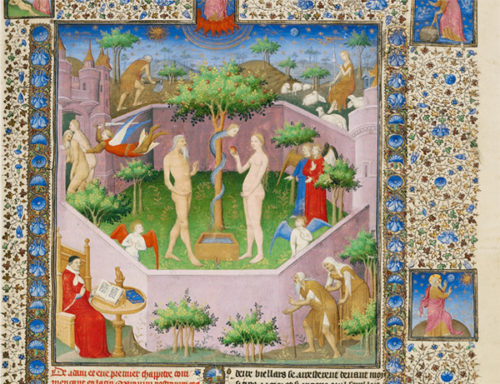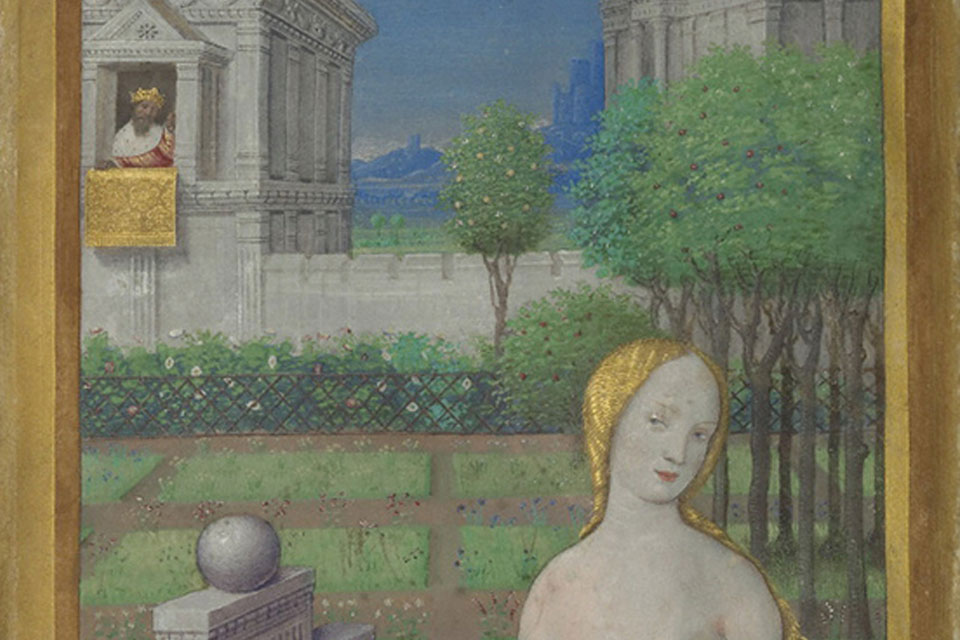Earthly delights abound in Getty Exhibition showing beautiful Renaissance Gardens
During the Renaissance, gardens and their flora continued to be used as religious symbols in art, as signs of social status, or simply enjoyed for their aesthetic value. In this there was no break from the Middle Ages, where gardens and flowers carried rich symbolic undercurrents. However, a certain shift took place in the Renaissance, reflecting the renewed search for the exact location of Paradise, spurred on by the age of discovery.
Whether part of a grandiose villa or a feature of a common kitchen yard, gardens were no longer only planted and treasured by people at all social levels for their spiritual or practical ramifications. They were also turning into grand collections of all sorts of exotic plants exchanged by avid collectors.
Although the garden was thus already represented in art from the Middle Ages, Renaissance depictions came to show an increased concern for naturalism and the documentation of new and rare plant species.
Gardens of the Bible

Nevertheless, this new naturalistic twist did not suppress the biblical connotations of an earlier age. As is well known that the story of Christian salvation is rooted in gardens, from Adam and Eve’s original sin in the Garden of Eden to Christ’s resurrection in the Garden of Gethsemane. Renaissance theologians and adventurers sought to discover the exact geographical location of Eden, and pilgrims risked the dangers of travel to visit the gardens that Christ had frequented. For other devout Christians, tranquil manuscript images of Mary in a garden continued to facilitate devotion and prayer. Traditionally artists often represented Eden as a verdant orchard with high walls, while the gardens associated with Mary and Christ tend to be smaller and enclosed by a simple wooden fence. However, to this should be added the new image of the protestant churches as civilised gardens as opposed to the Catholic wilderness and arid deserts frequented by emaciated saints.
A distinctive engagement of religion and nature occurs in the representation of Christ as a gardener. According to the Bible, after the Crucifixion, Christ was buried on a plot of land containing a garden. His follower, Mary Magdalene, initially mistakes Christ for a gardener, but rejoices when she recognizes him. In an image by Flemish artist Lieven van Lathem (about 1469), Mary Magdalene kneels before the resurrected Christ, who is depicted holding a shovel to represent her initial misidentification. In a pen and gray black ink drawing of Christ as the Gardener (about 1470—1490) by the Upper Rhenish Master, Christ is seen again with a shovel amidst some grass, and offers a gesture as if to tell Mary Magdalene (not pictured) not to hold on to him since he must ascend to heaven.
Gardens at Court
What is an Italian villa or French château without a garden? In the Renaissance, gardens complemented the architectural harmony of courtly estates through plantings along a central axis and beds of herbs and flowers arranged in geometric patterns. The combination of sculptures, fountains, and topiaries in gardens not only expressed the patron’s control over nature but also expressed the Renaissance ideal that art is shaped by art. In manuscripts, a courtly garden could serve as a backdrop that conveyed a ruler’s status or as a stage for activities both reputable and scandalous. In Jean Bourdichon’s Bathsheba Bathing (1498–99), Bathsheba’s sensuous nude figure seduces not only King David at the palace window but likely also the patron of the manuscript that contained this leaf, King Louis XII of France. The biblical story that inspired this image does not mention a garden, but artists often placed Bathsheba in one because a garden traditionally represented female virtue.
Exhibition

In Gardens of the Renaissance, on view at the J. Paul Getty Museum, Getty Center, visitors are given a glimpse into how people at the time pictured, used, and enjoyed these idyllic green spaces.
The small exhibition features over 20 manuscript illuminations, a painting, a drawing and a photograph from the Getty Museum’s permanent collection, as well as loaned works from the Getty Research Institute and private collectors James E. and Elizabeth J. Ferrell. In addition to the exhibition, the Getty’s Central Garden will be planted with flowers and greenery commonly seen during the Renaissance in Europe, with their care overseen by Central Garden supervisor Michael DeHart
“This exhibition celebrates the Renaissance garden, which inherited the traditions established by the medieval monastic cloister and provided the foundation for the extravagant gardens of the Baroque period, such as Louis XIV’s renowned Versailles,” explains Timothy Potts, director of the J. Paul Getty Museum. “The exhibition will include a number of exceptional objects from the Museum’s collection that reflect the Renaissance appreciation for magnificent foliage, brilliant color, and landscape design. We are also in a unique position to share with visitors living examples of typical Renaissance plantings through our own garden, which I’m sure will bring the exhibition to life and greatly appeal to the many visitors who come to enjoy our spectacular gardens and landscaping.”
Gardens of the Renaissance is on view May 28–August 11, 2013 at the J. Paul Getty Museum, Getty Center. The exhibition is curated by Bryan Keene, assistant curator in the manuscripts department. The exhibition will be accompanied by the book Gardens of the Renaissance, written by Bryan Keene and published by Getty Publications.
VISIT:
Gardens of the Renaissance
At the J. Paul Getty Museum, Getty Center, California
28.05.2013 -11.08.2013
READ:

Bryan Keene
Getty 2013
READ MORE:
READ MORE:



